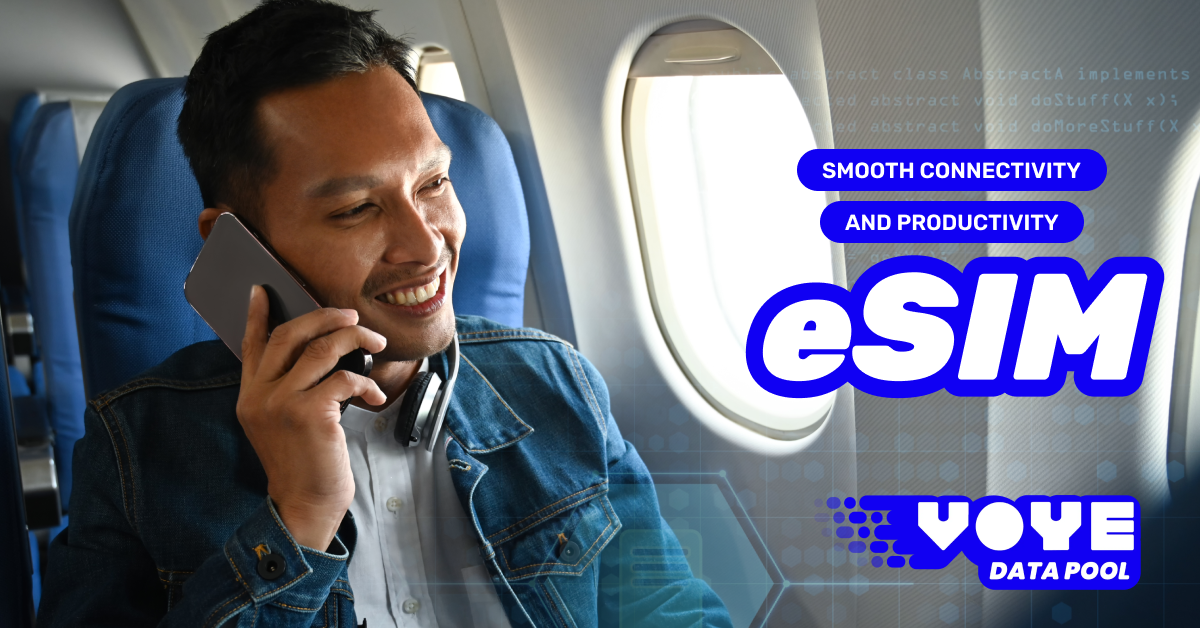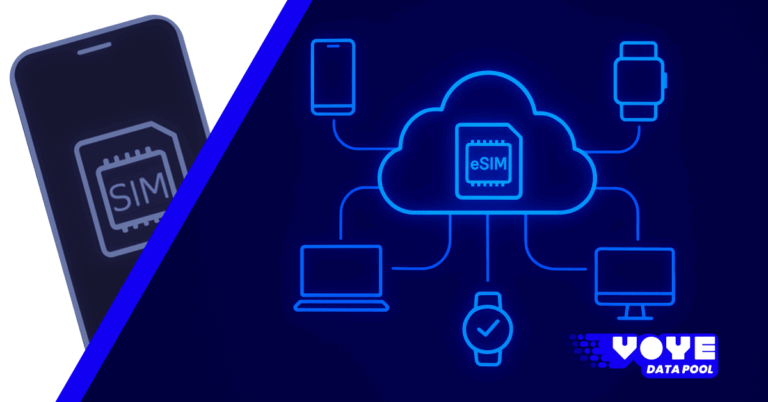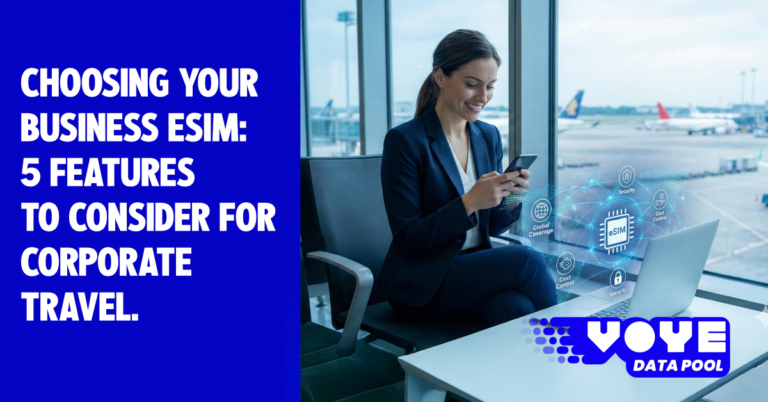How HR Can Support Traveling Employees with Seamless Connectivity
Supporting employees on the move is more than just a convenience—it’s a necessity. This blog explores how HR can ensure traveling employees stay connected seamlessly, maintaining productivity and effective communication. From leveraging modern connectivity solutions to practical tips for managing remote work on the go, discover strategies that keep your team connected anytime, anywhere.

Why Connectivity is Now a Core HR Responsibility
The role of Human Resources (HR) has evolved beyond compliance, recruitment, and employee engagement. In today’s globalized economy, HR leaders are increasingly responsible for enabling employees to be productive anywhere in the world. With business travel rebounding strongly post-pandemic, one challenge rises above all others: ensuring seamless, secure, and cost-effective connectivity for employees abroad.
Connectivity is not merely an IT issue. When employees travel without reliable internet access, productivity drops, collaboration suffers, and frustrations rise. Worse, unexpected international roaming charges can create unnecessary costs and even employee distrust. HR sits at the intersection of people, policy, and technology—making it the department best positioned to support traveling employees with modern connectivity solutions.
This blog explores how HR leaders can adopt smarter strategies, build travel-friendly policies, and deploy tools like Voye Data Pool to empower employees with effortless mobile internet, while protecting organizational budgets and data security.
The Rising Importance of Seamless Connectivity in Business Travel
Global Business Travel is Back—But More Complex
According to the Global Business Travel Association (GBTA), corporate travel spending is projected to exceed $1.4 trillion by 2026, surpassing pre-2020 levels. Yet, the way employees travel has changed:
- Hybrid Work Models: Employees are extending trips by blending work and leisure (“bleisure”), which means they require secure internet access outside office or hotel Wi-Fi.
- Distributed Teams: Collaboration tools like Microsoft Teams, Zoom, and Slack demand constant data connectivity.
- Increased Risk Awareness: From cybersecurity threats on public Wi-Fi to compliance with GDPR and local regulations, HR must ensure employees remain safe while connected.
Why HR Needs to Step In
Traditionally, connectivity for traveling employees was left to IT or finance. But HR manages the employee experience and owns critical levers:
- Designing travel policies that cover digital needs.
- Supporting employee well-being by reducing travel stress.
- Negotiating benefits that enhance productivity.
In short, seamless connectivity is no longer a perk—it’s a core enabler of employee performance abroad, and HR must take a leadership role.
Challenges Employees Face with Connectivity Abroad
To appreciate HR’s role, we need to recognize the pain points employees encounter when traveling:
1. High Roaming Costs
Traditional SIM cards can generate unexpected four-figure roaming bills, creating stress for both employees and finance teams. Even a few days of high data usage can erode budget controls.
2. Patchwork Solutions
Employees often juggle local SIM cards, hotel Wi-Fi, and portable hotspots. This creates inconvenience, multiple expense claims, and potential security vulnerabilities.
3. Cybersecurity Risks
Public Wi-Fi networks in airports, cafes, or hotels are notorious for man-in-the-middle attacks and data theft. When employees access sensitive corporate files abroad, organizations face compliance and security risks.
4. Administrative Burden
Without centralized management, HR and finance teams struggle to track who is using what, leading to invisible expenses and poor data governance.
5. Employee Stress and Productivity Loss
Travel is already stressful. Hunting for SIM cards at arrival, struggling with coverage gaps, or worrying about bills distracts employees from focusing on business goals.
These challenges highlight the need for HR-driven strategies backed by enterprise-grade solutions like Voye Data Pool.
The Strategic Role of HR in Supporting Connectivity
HR’s responsibility in connectivity can be grouped into three pillars:
1. Policy Design
HR should create travel policies that explicitly address digital connectivity needs. This includes:
- Clear guidelines on data allowances.
- Approved solutions for secure connectivity.
- Rules for reimbursement and budget caps.
2. Employee Enablement
Employees need more than guidelines—they need practical tools:
- Access to corporate eSIMs before departure.
- Training on safe internet usage abroad.
- Support channels if connectivity issues arise.
3. Vendor Partnerships
HR can collaborate with IT, finance, and procurement to secure enterprise-level contracts that balance employee experience and cost efficiency.
By aligning these pillars, HR ensures that travel remains productive, cost-controlled, and stress-free.
Introducing Voye Data Pool: The HR Command Center for Connectivity
Voye Data Pool is designed specifically for organizations looking to empower traveling employees with seamless, secure, and budget-friendly connectivity. Unlike fragmented solutions, it provides a single platform for HR and IT leaders to manage everything.
Key Features Benefiting HR
- Unlimited eSIMs: Employees can instantly activate mobile data without physical SIM cards, reducing logistical stress.
- Data Pools with Cost Limits: HR can allocate shared data across employees, with customizable cost caps to eliminate surprise bills.
- Multi-User Management: From one dashboard, HR can provision, monitor, and manage multiple employees traveling simultaneously.
- Real-Time Usage Insights: Track who is consuming how much data, ensuring accountability and transparency.
- Global Coverage: Employees remain connected in over 150+ countries, without needing to negotiate with local operators.
This combination of scalability, cost efficiency, and security makes Voye Data Pool an HR-friendly platform for global mobility.

Seamless eSIM Connectivity for Enterprises
Activate, manage, and scale eSIMs with ease.
Practical Steps for HR to Implement Seamless Connectivity
Step 1: Audit Current Travel Policies
- Review current travel guidelines for digital gaps.
- Assess historical roaming bills and pain points.
- Interview frequent travelers for feedback.
Step 2: Define Organizational Objectives
Is the priority cost reduction, employee well-being, or cybersecurity compliance? HR must align goals with broader corporate strategy.
Step 3: Partner with IT and Finance
Connectivity intersects multiple departments. HR should coordinate with IT for cybersecurity protocols and finance for budget control.
Step 4: Deploy eSIM and Data Pool Solutions
By adopting Voye Data Pool, HR can provide employees with pre-configured eSIMs before departure. This ensures instant connectivity upon landing.
Step 5: Educate Employees
Train employees on:
- How to activate their eSIM.
- Safe browsing practices abroad.
- How to request support if issues arise.
Step 6: Monitor, Adjust, and Scale
Using Voye Data Pool’s analytics, HR can monitor real-time usage, adjust allowances, and continuously optimize the program.
The ROI of Seamless Connectivity for HR and Business
Productivity Gains
Employees with reliable connectivity spend less time troubleshooting and more time engaging in high-value activities.
Reduced Costs
Organizations using eSIMs and data pools can save up to 90% on international roaming costs compared to traditional carriers.
Enhanced Employee Experience
Connectivity is now a well-being factor. Stress-free travel improves morale, retention, and employer branding.
Risk Mitigation
Centralized management reduces exposure to shadow IT, fraudulent expenses, and cybersecurity breaches.
Case Scenario: HR in Action
Imagine a multinational company sending 20 consultants to Asia for a 3-week client project.
- Traditional roaming could cost $500 per person, totaling $10,000.
- With local SIM cards, HR faces administrative headaches and fragmented receipts.
- With Voye Data Pool, HR issues eSIMs centrally, sets a $3,000 shared data pool, and tracks usage daily.
Result: 70% cost savings, improved employee experience, and zero administrative chaos.
Building a Future-Ready HR Connectivity Strategy
Integrating Connectivity into the Employee Value Proposition
Just as organizations highlight health insurance or learning opportunities, offering seamless travel connectivity becomes a competitive advantage in talent attraction.
Supporting New Work Models
- Digital Nomads: Employees who work from multiple countries expect enterprise-grade connectivity.
- Sustainability Goals: Reducing redundant SIM cards and travel inefficiencies supports ESG commitments.
- Global Projects: With seamless connectivity, cross-border teams can function as smoothly as co-located ones.
HR as a Business Enabler
By leading connectivity strategies, HR demonstrates its value not just as a support function, but as a strategic business enabler—driving productivity, cost efficiency, and employee satisfaction.
Conclusion: Empowering Employees, Empowering Organizations
Seamless connectivity is no longer optional. For organizations investing heavily in business travel, it is a strategic imperative. HR leaders have the unique opportunity to champion this cause, aligning policies, technology, and employee needs into one cohesive approach.
With solutions like Voye Data Pool, HR can:
- Guarantee secure and reliable internet access worldwide.
- Slash roaming costs by up to 90%.
- Manage employees’ digital needs from a single dashboard.
The future of work is global, mobile, and digital. By ensuring traveling employees stay connected, HR not only supports individuals but strengthens the organization’s competitive edge in the global marketplace.



 7 min read
7 min read





